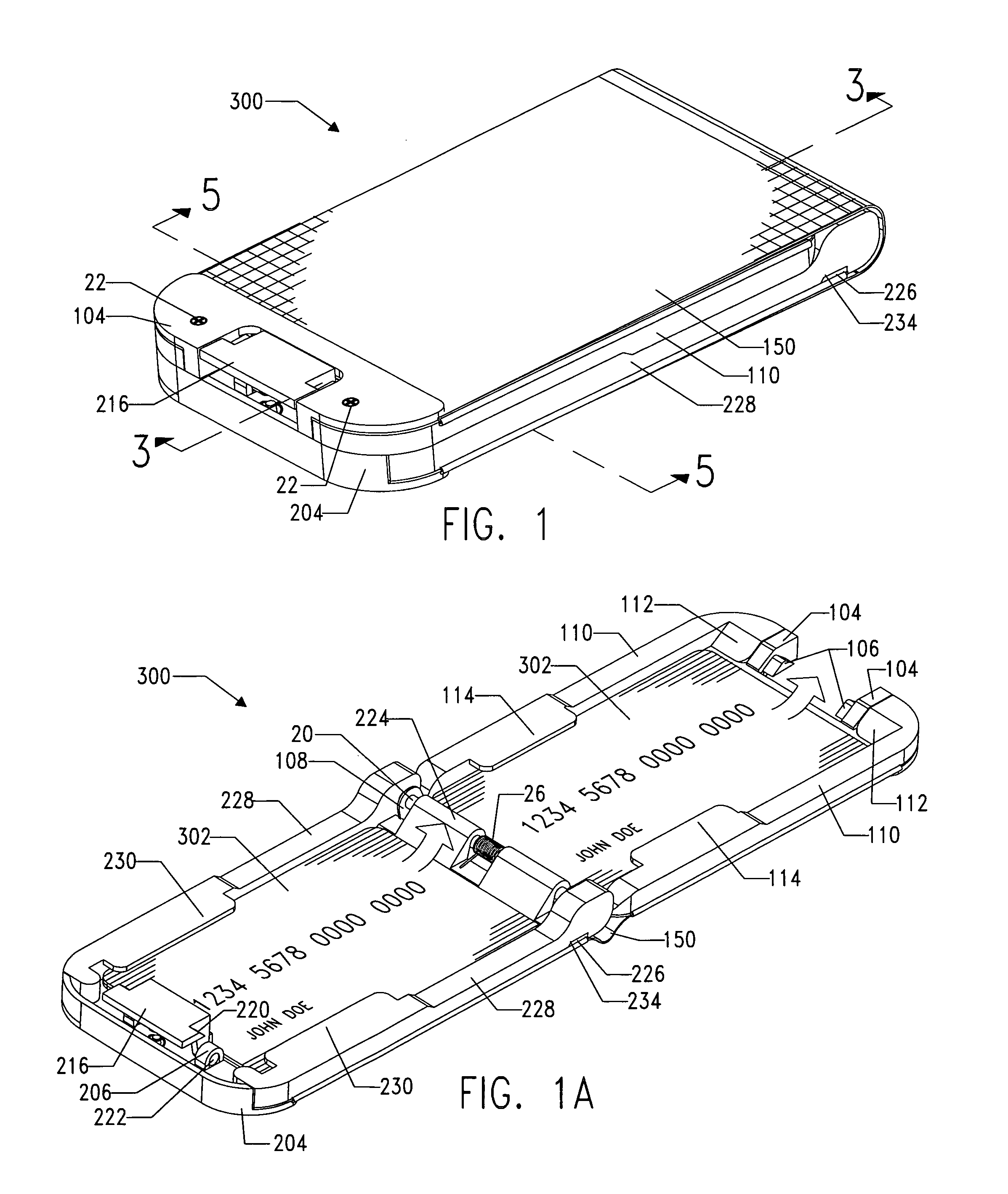Electromagnetic shielding carrying case for contactless smartcards and personal articles
a technology of electromagnetic shielding and smartcards, applied in the field of carrying cases, can solve the problems of accidental unauthorized scanning of rfid enabled cards, user's inability to take a proactive role in securing information on their cards, and special made for a very small quantity, so as to achieve maximum visibility and improve access
- Summary
- Abstract
- Description
- Claims
- Application Information
AI Technical Summary
Benefits of technology
Problems solved by technology
Method used
Image
Examples
Embodiment Construction
[0038]As used herein, the term “contactless smartcards” is meant to include any wallet-sized card, such as license, credit, check, ATM, or membership cards that are approximately 8.5 cm long by 5.5 cm wide and 1 mm or less thick and contain an RFID microchip within them that stores personal data. The electromagnetic shielding carrying case which is the preferred embodiment of the present invention is broadly denoted by the numeral 300 and is shown in its closed state in FIG. 1, in its open state in FIG. 1A, and turned sideways while in its open state in FIG. 2 to display paper currency pocket 160. Electromagnetic shielding carrying case 300 is preferably built in two parts—front panel assembly 100 is built first and then connected to rear panel assembly 200.
[0039]Front panel assembly 100, as seen in part of FIG. 7 and exploded in FIG. 6, comprises a first shielding member 102 having a planar four sided shape and an inner and outer surface with a pair of hinge mem...
PUM
| Property | Measurement | Unit |
|---|---|---|
| thick | aaaaa | aaaaa |
| thick | aaaaa | aaaaa |
| thick | aaaaa | aaaaa |
Abstract
Description
Claims
Application Information
 Login to View More
Login to View More - R&D
- Intellectual Property
- Life Sciences
- Materials
- Tech Scout
- Unparalleled Data Quality
- Higher Quality Content
- 60% Fewer Hallucinations
Browse by: Latest US Patents, China's latest patents, Technical Efficacy Thesaurus, Application Domain, Technology Topic, Popular Technical Reports.
© 2025 PatSnap. All rights reserved.Legal|Privacy policy|Modern Slavery Act Transparency Statement|Sitemap|About US| Contact US: help@patsnap.com



